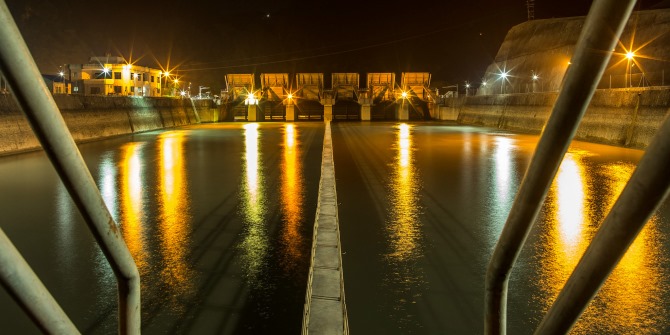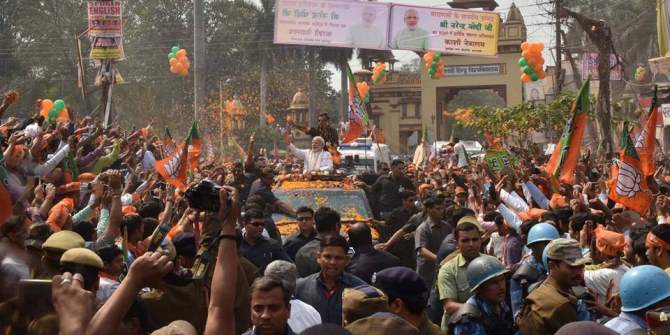Ramachandra Guha argues that 65 years after independence, the Indian experiment has not failed, nor has it emphatically succeeded. This article first appeared in the Hindustan Times.
In a book published in 2007 — the year marking the sixtieth anniversary of Indian Independence — I argued that while a democracy had to be founded by visionaries, it could be run in mid-career by mediocrities. Such was the case with India, and with the United States, for the distance between India’s first and most recent prime ministers was no more, and no less, than the distance between America’s first and latest President (at the time, George Washington and George W. Bush, respectively).
Five years later, I see that this might have been an excessively sanguine judgment. For, as is now increasingly apparent, most politicians in India are worse than mediocrities, being motivated by sectarianism, greed, or nepotism (or all of the above). “The state is impersonal; the Argentine can only conceive of personal relations,” wrote Jose Luis Borges, “Therefore, to him, robbing public funds is not a crime. I am noting a fact; I am not justifying or excusing it.”
The causes of corruption in India are somewhat more sociological — not so much “personal” as “kin” or “community” relations. Public funds are diverted not to one’s friends, but to one’s sons, nephews, and caste-mates. But the effect is the same, namely, the undermining of institutions meant to serve society as a whole rather than a particular slice of it.
Some institutions have stood apart from the trend. The Election Commission of India runs polls efficiently and fairly; the Comptroller & Auditor General rigorously scrutinises public spending; the Finance Commission allocates funds to states in a non-partisan manner. Unlike in neighbouring Pakistan, Bangladesh, Nepal and China, the armed forces have stayed away from politics. Many (but by no means all) judges of the Supreme Court are competent and honest.
On the whole, though, public institutions in India are defined more by corruption and incompetence than by transparency and accountability. The Gandhian period, in retrospect, seems an aberration. Inspired by the idealism and spirit of self-sacrifice of the national movement, two or three generations of politicians, civil servants and judges subordinated their personal ambitions (and kinship ties) to the impersonal goals of the institutions they had chosen to serve.
As late as the 1960s, most Cabinet ministers and all Supreme Court judges were, in a financial sense, incorruptible. However, as the impulse animating the freedom struggle receded, the basic building blocks of the society reasserted themselves. Whether acting in their private or their public capacity, officials of the state would now privilege the interests of their family, caste and community above those of the institution itself. While this decline is clear enough in the central government, it is even more precipitous in most state governments.
The degradation of public institutions has serious consequences for both development and democracy. For example, while 20 years of steady economic growth have made a dent on absolute poverty, the gap between rich and poor has increased. So has the gap between different states and regions.
To equalise life chances would require that the government ensure that all citizens have reasonable access to decent education and health care, and to roads and electricity. Yet, while rich Indians can pay for fine private schools and super-specialty hospitals, the state-run schools and hospitals on which most others depend are in abysmal shape. And dams built to supply power to New Delhi and Mumbai leave the villages in their vicinity in darkness.
As the state has grown more dysfunctional, there are some countervailing trends within society. The French sociologist Louis Dumont famously described Indians as “Homo Hierarchicus”. Certainly, no other civilisation had such rigorously elaborated social divisions in the past.
The suppression of untouchables in traditional India was far more substantial than that of serfs in medieval Europe. The oppression of women was a constitutive feature of Hindu and Islamic traditions. Unlike Christianity, both encouraged polygamy; further, one refused to allow widows to remarry, the other proscribed women from appearing in public places.
Low castes and women are still discriminated against in India, particularly in the countryside, where hierarchies are more entrenched, and where physical violence against those seeking equal rights is less likely to be written up in newspapers or punished by the law. Even in the cities — as recent events in Mangalore and Guwahati suggest — there are some horrific instances of the abuse of women. Yet, from a deeper historical point of view it seems clear that the trend is towards greater social (as distinct from economic) equality.
These attacks on women and low castes are a desperate attempt to maintain old social privileges. Some upper-caste men cannot abide the fact that the Indian workplace is far more socially representative than it ever was before. Civil servants, entrepreneurs, lawyers and teachers now come from all castes and both genders. As urbanisation and industrialisation proceed, the old discriminations will fade away further. To be sure, there is much work to be done before Dalits (or women) can count as fully equal citizens. Still, there is little doubt that, on the whole, Dalits and women are less disprivileged than they were fifty or a hundred years ago.
The real social failure of modern India pertains rather to the adivasis, who have little political voice, and who have been squeezed out of their land and natural habitat by both state-sponsored and private-sector-led economic policies. That Maoist insurgents have been most successsful in tribal areas is in part a consequence of the suitability of hills and forests for guerilla warfare; and in larger part a consequence of the colossal exploitation of tribals by the wider society, which has led so many of them to flock towards the revolutionaries.
If the condition of the adivasis is the most disheartening aspect of modern India, the achievement we can be most proud of is linguistic pluralism. Indians are free to speak, learn, and administer themselves in the language of their choice. The decision not to impose a single national language has saved the country from the civil strife that has bedevilled Pakistan and Sri Lanka. The record on religious pluralism is more mixed. When Jawaharlal Nehru was Prime Minister, his insistence on treating Muslims as equal citizens helped heal the wounds of Partition. In the 1980s and 1990s, Hindu fundamentalism was on the ascendant, provoking a wave of religious riots.
In the last decade, communal tempers have cooled somewhat. The middle class (Gujarat apart) is no longer so enamoured with the idea of a ‘Hindu Pakistan’, while Indian Muslims have resolutely turned their backs on jihadism. Regular attempts by terrorists from across the border (as in Mumbai in November 2008) have failed to provoke riots.
But this remains — as the tragic violence in Kokrajhar reminds us — a fragile peace, prone to disturbance by extremist elements seeking to take advantage of a state not always able (or willing) to enforce the law.
Sixty-five years after the British departed, the Republic of India remains a work in progress. The experiment has clearly not failed; nor has it emphatically succeeded. Home to the most elevating as well as the most depressing aspects of the human experience, it inspires — in this citizen at any rate —pride and embarrassment in equal measure.
Ramachandra Guha is the Philippe Roman Chair in History and International Affairs at LSE IDEAS for the 2011-2012 academic year.







